Best Time to Visit Nepal
Choosing the right time to visit Nepal is crucial to ensure you make the most of your journey. Depending on your interests and preferences, different seasons offer unique opportunities and challenges.
Choosing the right time to visit Nepal is crucial to ensure you make the most of your journey. Depending on your interests and preferences, different seasons offer unique opportunities and challenges.
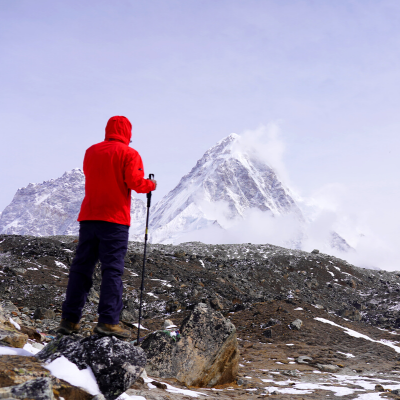
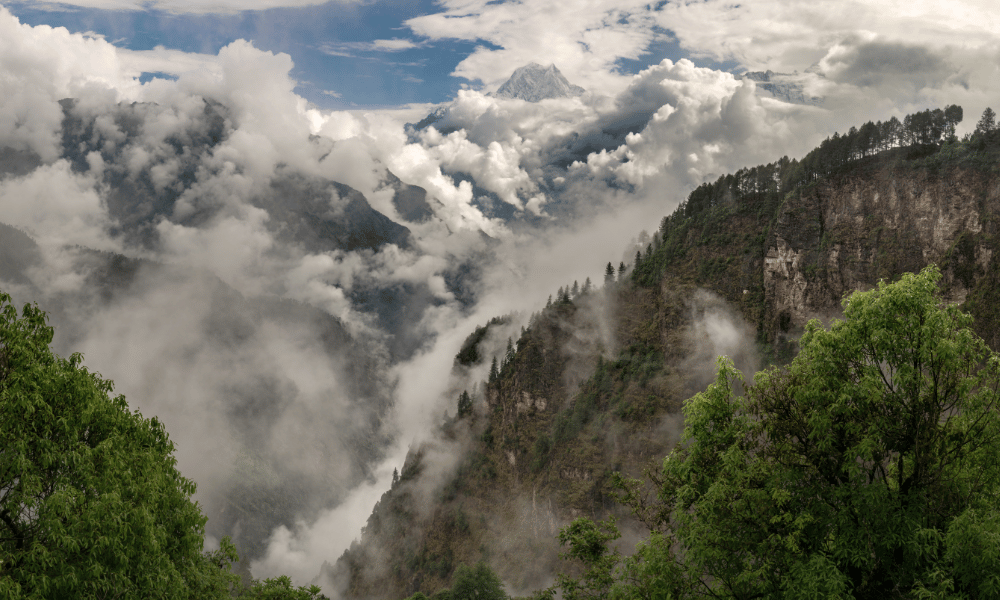
Nestled between the soaring peaks of the Himalayas and the lush jungles of the Terai, Nepal is a captivating travel destination that offers unparalleled natural beauty, rich cultural heritage, and warm hospitality. This South Asian gem, home to eight of the world's ten highest mountains, including the majestic Mount Everest, is a haven for trekkers, adventurers, and spiritual seekers alike. As you explore the wonders of Nepal, you will be enchanted by the diverse experiences it offers, from the bustling streets of Kathmandu to the serene monasteries perched atop hilltops.
Choosing the right time to visit Nepal is crucial to ensure you make the most of your journey. Depending on your interests and preferences, different seasons offer unique opportunities and challenges. This blog post will provide you with a comprehensive travel guide to Nepal, covering major attractions, the best time to visit, essential travel tips, and a glimpse into the country's rich cultural heritage. So, buckle up and get ready to embark on an unforgettable adventure to the land of the Himalayas!
Nepal's climate is primarily influenced by its diverse topography and altitude, resulting in a wide range of weather conditions across the country. Generally, the climate can be divided into four distinct seasons: spring, summer, autumn, and winter. Understanding each season's characteristics will help you plan your visit accordingly.
Spring is considered one of the best times to visit Nepal, as the weather is generally mild and pleasant. The temperature ranges from 16°C to 23°C (61°F to 73°F) in lower elevations and is cooler at higher altitudes. This season offers excellent trekking conditions, with clear skies and blooming rhododendron forests adding vibrant colors to the landscape. It is also a popular time for mountaineering expeditions.
The summer season in Nepal is marked by the monsoon, which brings heavy rainfall and occasional landslides, especially in the lower regions. Despite the rain, temperatures can reach up to 30°C (86°F) in some areas. The monsoon season makes trekking challenging, but it's an excellent time to visit the rain-shadow areas like Mustang and Dolpo, which remain relatively dry. The lush greenery and rice terraces during this season are also a sight to behold.
Autumn is widely considered the best time to visit Nepal, as the monsoon has cleared the air, leaving crystal-clear skies and spectacular mountain views. The weather is stable, with temperatures ranging from 15°C to 24°C (59°F to 75°F). The pleasant climate and breathtaking scenery make it the peak season for trekking, cultural tours, and wildlife safaris. However, popular trails can be crowded during this time.
Winter in Nepal is characterized by cold temperatures, particularly in the mountainous regions, where it can drop below freezing. The lower elevations and cities like Kathmandu and Pokhara experience milder temperatures, ranging from 9°C to 12°C (48°F to 54°F). The winter season is ideal for lower-altitude treks, cultural tours, and wildlife safaris in the Terai region. Snowfall in higher elevations may make some trekking routes inaccessible.
Nepal's climate and seasons offer a variety of experiences. Spring and autumn are the most popular times to visit due to favorable weather conditions, while summer and winter have their unique charms and opportunities for more off-the-beaten-path adventures.
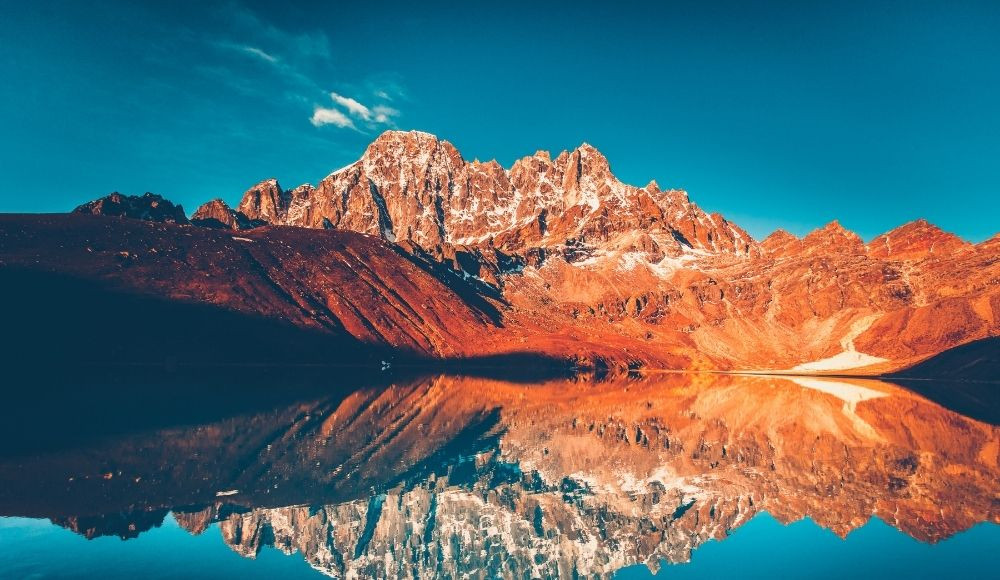
Spring in Nepal is characterized by mild and pleasant weather, with temperatures ranging from 16°C to 23°C (61°F to 73°F) in lower elevations and cooler temperatures at higher altitudes. As the snow from winter melts, the days become warmer and longer, and the skies are mostly clear, offering stunning views of the snow-capped Himalayas.
Trekking: Spring is an excellent time for trekking in Nepal, with popular routes such as the Everest Base Camp Trek, Annapurna Circuit Trek, and Langtang Valley Trek offering ideal conditions and picturesque landscapes.
Rhododendron forests: The vibrant red, pink, and white rhododendron blooms add a magical touch to the country's hills and mountains during spring, making it a fantastic time for nature lovers and photographers.
Wildlife safaris: The mild temperatures and clear skies make spring an ideal time to visit national parks like Chitwan National Park and Bardia National Park for wildlife safaris, where you can spot animals like one-horned rhinoceros, Bengal tigers, and various species of deer and birds.
Paragliding and hot air ballooning: The favorable weather conditions during spring make it a great time for adventure activities like paragliding in Pokhara and hot air ballooning in the Kathmandu Valley, offering breathtaking aerial views of the landscape.
Holi: Known as the festival of colors, Holi is a lively and vibrant event celebrated throughout Nepal, usually in March. People throw colored powders and water at each other and indulge in music, dance, and merrymaking.
Nepali New Year (Bisket Jatra): Celebrated in mid-April, the Nepali New Year marks the beginning of the Bikram Sambat calendar. The celebration involves processions, chariot pulling, and various cultural events, with the town of Bhaktapur hosting the most famous festivities.
Buddha Jayanti: This significant Buddhist festival, usually celebrated in May, commemorates the birth, enlightenment, and passing away of Lord Buddha. Lumbini, the birthplace of Buddha, and other sacred Buddhist sites like Boudhanath and Swayambhunath Stupa in Kathmandu, become hubs of religious activities and prayers during this time.
The summer season in Nepal is marked by the monsoon, which brings heavy rainfall and high humidity, particularly in the lower regions. Temperatures can range from 20°C to 30°C (68°F to 86°F), with occasional landslides and flooding in some areas. The monsoon season typically lasts from late June to early September.
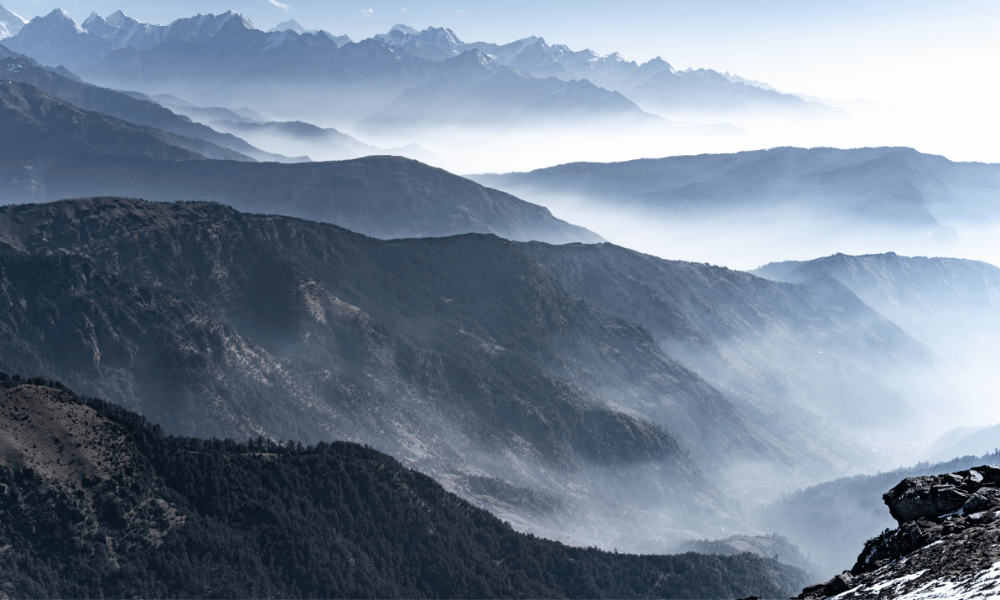
Rain-shadow areas: Despite the monsoon, some regions like Upper Mustang and Dolpo lie in the rain-shadow of the Himalayas, remaining relatively dry during the summer months. These areas offer unique trekking and cultural experiences.
Lush green landscapes: The monsoon rains transform Nepal's countryside into a verdant paradise, with rice terraces and forests taking on a vibrant green hue. This is an excellent time for photographers to capture the beauty of the country's lush landscapes.
Indoor activities: While outdoor activities may be limited due to the rain, summer is a great time to explore Nepal's rich cultural heritage through visits to museums, art galleries, and ancient temples in cities like Kathmandu, Bhaktapur, and Patan.
Yoga and meditation retreats: The summer months are ideal for spiritual seekers to immerse themselves in yoga and meditation retreats, which can be found in serene locations like Pokhara, Lumbini, and Nagarkot.
Rato Machhindranath Jatra: Celebrated in Patan between May and June, this month-long festival honors the rain god Machhindranath. The event is marked by a colorful procession, where a large chariot carrying the deity's image is pulled through the city streets, attracting thousands of devotees.
Janai Purnima: Held in August, Janai Purnima is a sacred thread-changing festival observed by Hindu Brahmins and Kshatriyas. Pilgrims flock to the Kumbeshwar Temple in Patan and the Gosainkunda Lake in the Langtang region to take holy baths and change their sacred threads.
Teej: Celebrated by Hindu women in August or September, Teej is a vibrant festival marked by fasting, singing, and dancing. Women dress in red, visit temples, and pray to Lord Shiva for the well-being of their husbands or future spouses.
Gai Jatra: This unique festival, held in August in the Kathmandu Valley, commemorates those who have passed away during the previous year. Families who have lost loved ones participate in a procession with cows or children dressed as cows, while onlookers enjoy satirical performances, dances, and traditional music.
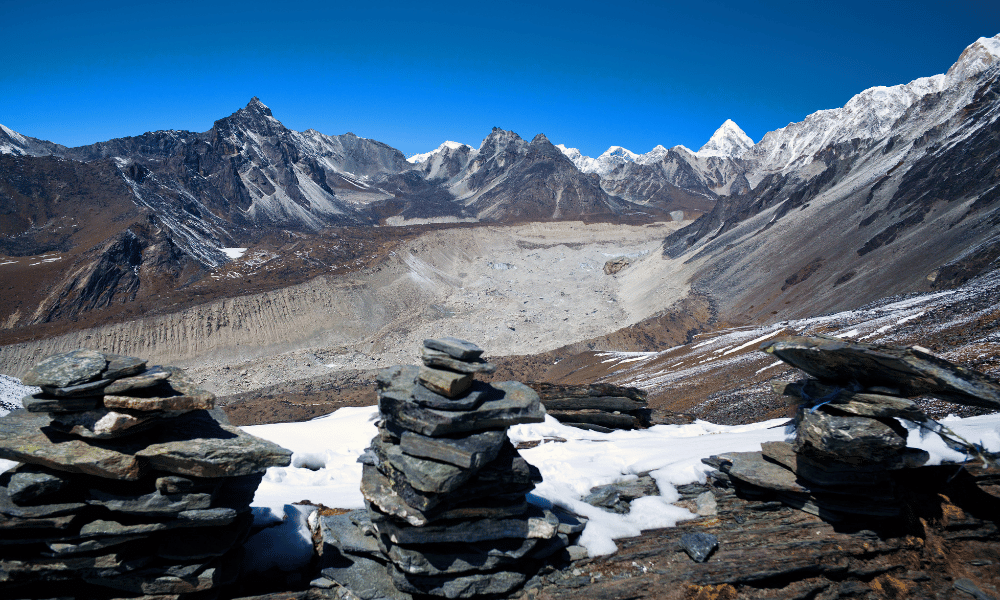
Autumn is considered the best time to visit Nepal due to its stable and pleasant weather conditions. The monsoon season has passed, leaving clear skies and crisp mountain views. Temperatures range from 15°C to 24°C (59°F to 75°F) in lower elevations, with cooler temperatures at higher altitudes. The mild climate makes it an ideal time for various outdoor activities.
Trekking: With the optimal weather and spectacular mountain vistas, autumn is the peak season for trekking in Nepal. Popular routes like the Everest Base Camp Trek, Annapurna Circuit Trek, and Manaslu Circuit Trek provide trekkers with incredible experiences and unparalleled scenery.
Wildlife safaris: National parks in the Terai region, such as Chitwan National Park and Bardia National Park, offer fantastic wildlife viewing opportunities during autumn. The clear skies and pleasant temperatures make it an ideal time for safaris to spot one-horned rhinoceros, Bengal tigers, elephants, and various bird species.
Cultural tours: Autumn's agreeable weather is perfect for exploring Nepal's ancient cities, temples, and UNESCO World Heritage Sites. Visit the Kathmandu Valley, Bhaktapur, and Patan to discover the country's rich history and architecture.
Mountain flights: With clear skies and stunning visibility, autumn is an excellent time to take a mountain flight for breathtaking aerial views of the Himalayan peaks, including Mount Everest.
Dashain: The most significant Hindu festival in Nepal, Dashain, is celebrated in September or October. The 15-day event is marked by family reunions, animal sacrifices, feasting, and the exchange of blessings and gifts. The festival symbolizes the victory of good over evil and is an opportunity for Nepalis to come together and celebrate with friends and family.
Tihar (Diwali): Known as the festival of lights, Tihar or Diwali is celebrated in October or November over five days. This joyous occasion involves the lighting of oil lamps, candles, and colorful decorations to welcome the goddess of wealth, Laxmi, into homes. Each day of the festival has its unique rituals and customs, including the worship of crows, dogs, cows, and oxen.
Chhath: Primarily celebrated by the people of the Terai region, Chhath is a sun worship festival that takes place in October or November. Devotees gather near rivers, ponds, or other water bodies to offer prayers to the sun god, Surya, and his sister Chhathi Maiya. The festival is marked by fasting, singing, and dancing.
Mani Rimdu: Mani Rimdu is an important Buddhist festival celebrated at Tengboche Monastery in the Everest region, usually in October or November. This colorful event features masked dances and rituals performed by monks, representing the triumph of Buddhism over the ancient Bon religion. The festival draws locals and trekkers alike, providing a unique cultural experience.
Indra Jatra: Celebrated in September, Indra Jatra is an eight-day festival that takes place in Kathmandu. The event honors Indra, the Hindu god of rain, and features various processions, masked dances, and the hoisting of a giant wooden pole called "Yosin" at Kathmandu Durbar Square. The festival also includes the Kumari Jatra, a chariot procession featuring the living goddess Kumari.
These festivals and events during autumn offer travelers a unique opportunity to immerse themselves in the rich cultural traditions of Nepal and create unforgettable memories.
Winter in Nepal is characterized by cold temperatures, particularly in mountainous regions where temperatures can drop below freezing. The lower elevations and cities like Kathmandu and Pokhara experience milder temperatures, ranging from 9°C to 12°C (48°F to 54°F). The skies remain mostly clear during this season, providing stunning mountain views. Snowfall in higher elevations may make some trekking routes inaccessible.
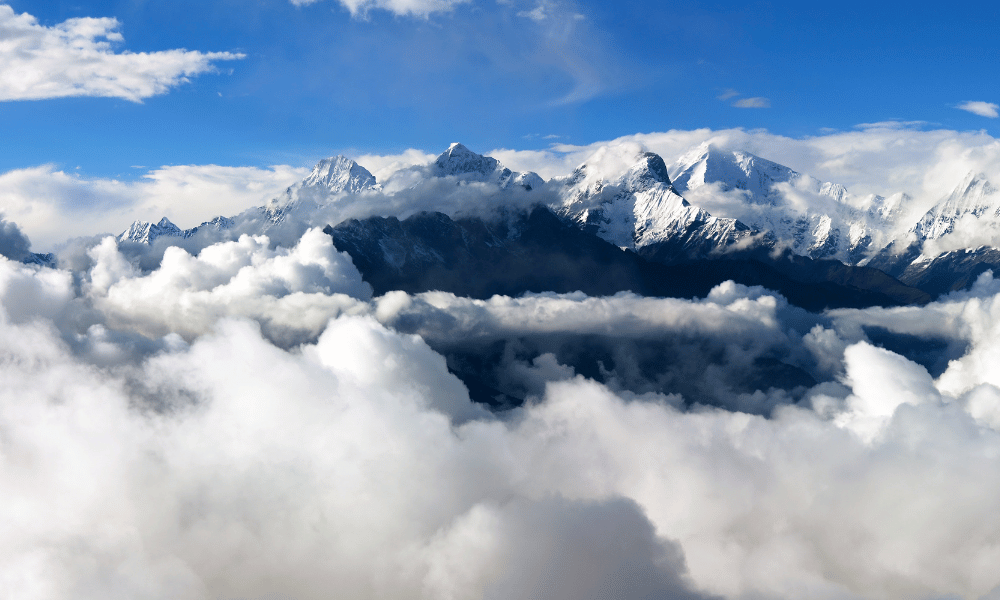
Lower altitude treks: While higher altitude treks may be challenging due to snow and cold temperatures, winter is a great time for lower altitude treks such as Poon Hill, Ghorepani, and the Kathmandu Valley Rim Trek. These trails offer impressive mountain views and fewer crowds.
Cultural tours: Winter is an excellent time to explore Nepal's cultural heritage in cities like Kathmandu, Bhaktapur, and Patan. The cooler temperatures make it comfortable for sightseeing and visiting ancient temples, palaces, and UNESCO World Heritage Sites.
Wildlife safaris: The Terai region, home to Chitwan National Park and Bardia National Park, offers milder temperatures during winter, making it an ideal time for wildlife safaris to spot one-horned rhinoceros, Bengal tigers, elephants, and various bird species.
Skiing and snowboarding: For adventure seekers, some regions in Nepal, such as Muktinath and Kalinchowk, offer skiing and snowboarding opportunities during the winter months, providing a unique way to experience the Himalayas.
Lhosar: Celebrated in January or February, Lhosar marks the Tibetan New Year and is observed by the Sherpa, Tamang, and Gurung communities in Nepal. The festival includes colorful processions, traditional dances, and family gatherings, offering a glimpse into the rich cultural traditions of these ethnic groups.
Maghe Sankranti: Maghe Sankranti is a mid-winter festival celebrated in January, marking the beginning of the month of Magh in the Bikram Sambat calendar. The festival involves ritual bathing in holy rivers, worshiping at temples, and feasting on traditional dishes like sesame seed laddoos and sweet potatoes.
Basanta Panchami: This Hindu festival, also known as Saraswati Puja, is celebrated in January or February to honor Saraswati, the goddess of knowledge, music, and art. Devotees visit temples, offer prayers, and participate in cultural programs, while students seek blessings for their education and artistic pursuits.
Winter in Nepal offers unique attractions and cultural experiences, making it an ideal time for travelers looking to explore the country's beauty and traditions with fewer crowds
The best months for trekking in Nepal are during the spring (March-May) and autumn (September-November) seasons. These months offer the most stable weather conditions, with clear skies, moderate temperatures, and excellent visibility. Spring brings the added bonus of blooming rhododendron forests, while autumn boasts crisp mountain views after the monsoon season.
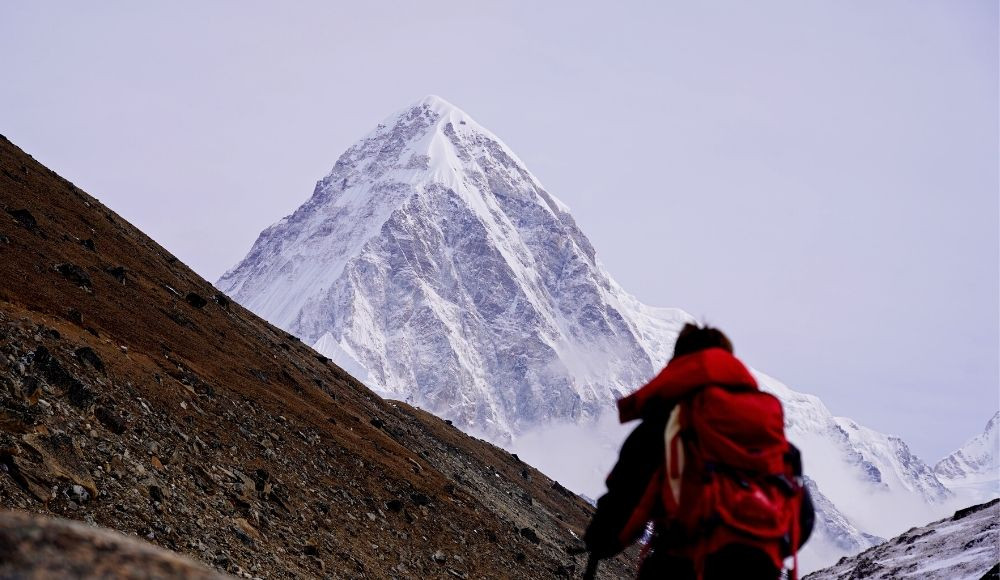
Everest Base Camp Trek: This iconic trek leads you to the foot of Mount Everest, the world's highest peak. The journey takes you through the heart of the Sherpa homeland, offering stunning views of the Himalayas and an insight into the local culture.
Annapurna Circuit Trek: One of Nepal's most diverse and popular treks, the Annapurna Circuit trek takes you through various landscapes, from lush subtropical forests to the arid Tibetan Plateau, with awe-inspiring views of the Annapurna massif.
Langtang Valley Trek: A relatively shorter and less crowded trek, the Langtang Valley Trek offers a rich cultural experience and breathtaking mountain views. It is easily accessible from Kathmandu and takes you through traditional Tamang villages and beautiful rhododendron forests.
Manaslu Circuit Trek: This off-the-beaten-path trek circles the eighth-highest peak in the world, Mount Manaslu. The trail offers a diverse range of landscapes, from subtropical forests to high-altitude glaciers, and a unique blend of Nepalese and Tibetan cultures.
Choose the right trek: Consider your fitness level, available time, and personal preferences when selecting a trekking route. Some treks are more challenging or longer than others, so it's essential to pick one that suits your abilities and interests.
Acclimatize properly: Altitude sickness can be a significant concern when trekking in Nepal. To minimize the risk, ensure you have a well-planned itinerary that allows for gradual acclimatization, with rest days and slow ascents.
Hire a guide and porter: A knowledgeable guide can enhance your trekking experience by sharing information about the culture, flora, and fauna of the region. A porter can help you carry your gear, allowing you to focus on enjoying the trek and preserving your energy.
Pack appropriately: Bring suitable clothing and gear for varying weather conditions, including warm layers, waterproof jackets, and proper footwear. Don't forget essentials like sunscreen, sunglasses, and a hat to protect against the intense sun at higher altitudes.
Stay hydrated and well-nourished: Drinking plenty of water and eating high-energy foods can help you maintain your energy levels and reduce the risk of altitude sickness.
The best months for wildlife viewing in Nepal are during the dry season, which spans from late autumn (October-November) through winter (December-February) and into early spring (March-April). During these months, the weather is cooler, and the skies are clear, making it easier to spot animals. Additionally, as the water sources in the forests and grasslands start to dry up, wildlife tends to congregate around the remaining water sources, increasing the chances of sightings.

Chitwan National Park: Located in the subtropical lowlands of the Terai region, Chitwan National Park is Nepal's first national park and a UNESCO World Heritage Site. The park is home to diverse ecosystems, including forests, grasslands, and riverine areas, providing habitat for numerous wildlife species.
Bardia National Park: Situated in the far western region of Nepal, Bardia National Park is the country's largest national park and offers a more remote and pristine wildlife experience. It is known for its extensive wildlife populations and a higher chance of spotting the elusive Bengal tiger.
Koshi Tappu Wildlife Reserve: Located in southeastern Nepal, Koshi Tappu Wildlife Reserve is a haven for birdwatchers, boasting over 450 species of birds. The reserve also hosts several mammal species and serves as a crucial habitat for the endangered wild water buffalo.
One-horned rhinoceros: Nepal is home to the world's second-largest population of one-horned rhinoceros, primarily found in Chitwan and Bardia National Parks.
Bengal tiger: These elusive big cats can be found in both Chitwan and Bardia National Parks, with Bardia offering a higher probability of sightings due to its remote location and fewer visitors.
Asian elephant: While some wild elephants can be spotted in Chitwan and Bardia National Parks, visitors can also observe and interact with captive elephants at various conservation centers and lodges in the parks.
Gharial and mugger crocodiles: Both Chitwan and Bardia National Parks provide suitable habitats for these reptiles, which can often be seen basking in the sun along the riverbanks.
Birds: Nepal boasts over 850 bird species, making it a paradise for birdwatchers. Some of the most sought-after species include the Bengal florican, swamp francolin, and various species of egrets, storks, and kingfishers.
When planning a wildlife safari in Nepal, it's essential to work with reputable tour operators and follow park guidelines to ensure a responsible and enjoyable wildlife experience.
While cultural exploration can be enjoyed year-round in Nepal, the best months for comfortable sightseeing are during the spring (March-May) and autumn (September-November) seasons. These months offer pleasant weather, clear skies, and moderate temperatures, allowing for easy exploration of cultural sites and participation in outdoor festivals.
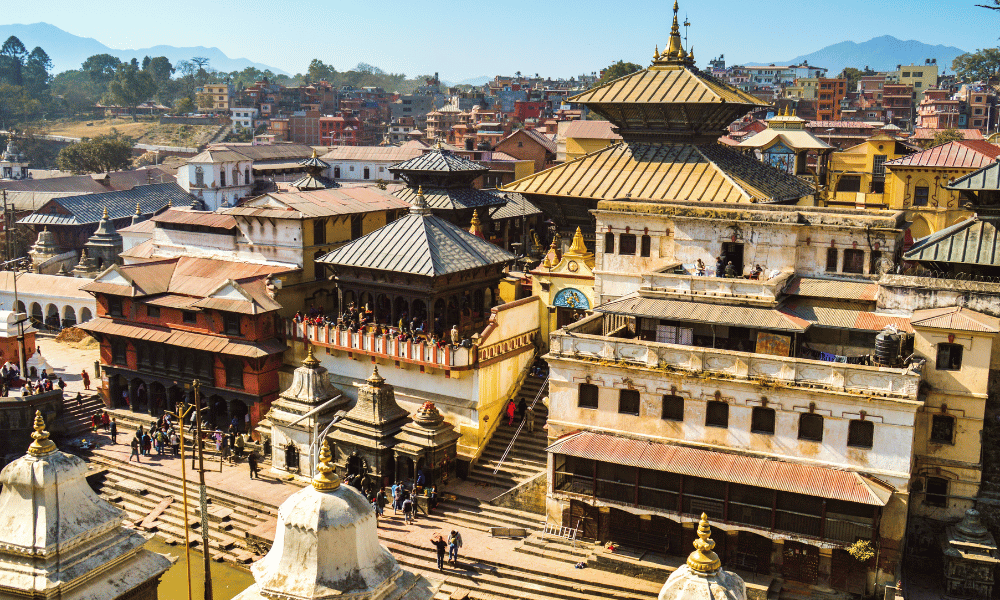
Kathmandu Valley: The valley comprises three ancient cities – Kathmandu, Patan, and Bhaktapur – each boasting a rich cultural heritage, ancient temples, and exquisite architecture. Key sites include the UNESCO World Heritage Sites of Pashupatinath, Swayambhunath, Boudhanath, and the Durbar Squares in each city.
Lumbini: As the birthplace of Lord Buddha, Lumbini is a UNESCO World Heritage Site and an important pilgrimage destination for Buddhists worldwide. The site features the Sacred Garden, Maya Devi Temple, Ashokan Pillar, and numerous monasteries built by various countries.
Pokhara: Known for its natural beauty, Pokhara also offers cultural experiences, including visits to the International Mountain Museum, Barahi Temple, and the Gurkha Museum. The city is also home to the World Peace Pagoda, which provides stunning views of the Annapurna mountain range.
Bandipur: A picturesque hilltop village located between Kathmandu and Pokhara, Bandipur showcases well-preserved traditional Newari architecture and offers a glimpse into rural life in Nepal.
Dashain: Celebrated in September or October, Dashain is Nepal's most significant Hindu festival, marking the victory of good over evil. The 15-day event involves family reunions, feasting, and the exchange of blessings and gifts.
Tihar (Diwali): Known as the festival of lights, Tihar takes place in October or November and features the lighting of oil lamps, candles, and colorful decorations to welcome the goddess of wealth, Laxmi. The five-day festival involves various rituals, including the worship of crows, dogs, cows, and oxen.
Holi: Celebrated in March, Holi is the festival of colors, marking the arrival of spring and the victory of good over evil. People throw colored powders and water at each other, making for a vibrant and joyous celebration.
Indra Jatra: This eight-day festival in September honors Indra, the Hindu god of rain. The event takes place in Kathmandu and features processions, masked dances, and the hoisting of a giant wooden pole called "Yosin" at Kathmandu Durbar Square.
Exploring Nepal's cultural heritage allows travelers to gain a deeper understanding of the country's history, traditions, and diverse communities.
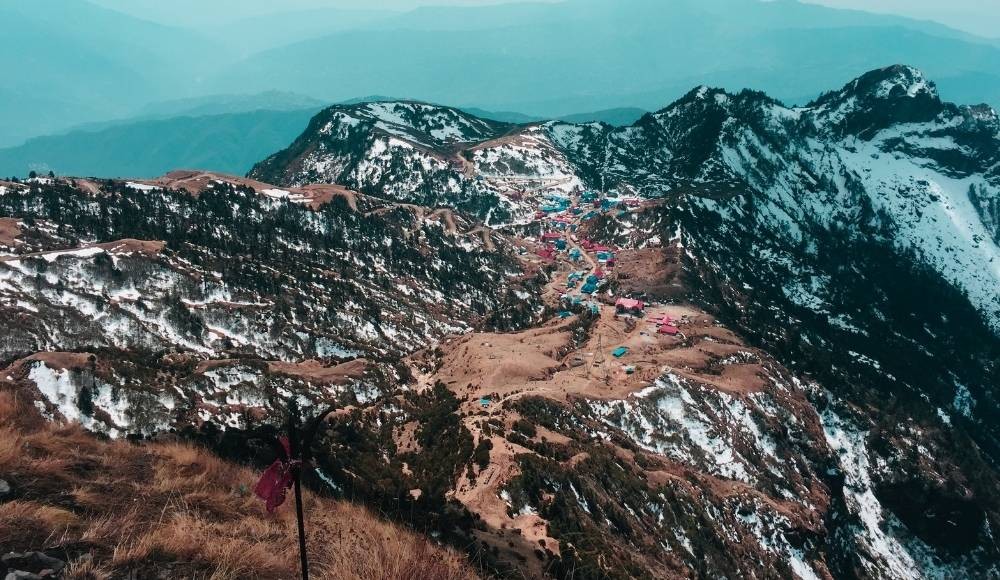
Pleasant weather with moderate temperatures, making it comfortable for various activities such as trekking, sightseeing, and wildlife safaris.
Blooming rhododendron forests, which add vibrant colors to the landscapes, particularly during trekking.
Clear skies and excellent visibility for mountain views and scenic flights.
Fewer tourists compared to the peak autumn season, providing a more peaceful experience.
Occasional pre-monsoon showers may cause temporary disruptions to outdoor activities.
Allergy sufferers may experience discomfort due to the increased pollen count during the flowering season.
Lush and green landscapes due to the monsoon rains, particularly in lower elevations.
Lower tourist numbers, offering a more secluded experience.
Ideal time for visiting the rain shadow areas like Upper Mustang and Dolpo, where the monsoon has little effect.
Monsoon rains can cause landslides, making some trekking routes and roads difficult to navigate.
Increased humidity and higher temperatures in the Terai region, making it less comfortable for wildlife safaris.
Limited mountain views and reduced visibility due to cloud cover and rain.
Stable and pleasant weather conditions, with clear skies and excellent visibility for mountain views.
Ideal for trekking, wildlife safaris, and cultural tours due to the comfortable temperatures and minimal rainfall.
Numerous cultural festivals, such as Dashain and Tihar, offering travelers unique insights into Nepalese traditions.
Peak tourist season, resulting in crowded trekking routes, busy accommodations, and higher prices.
Higher chances of encountering leeches in lower elevations during early autumn, following the monsoon season.
Fewer tourists, providing a more tranquil and intimate experience.
Cooler temperatures in the Terai region make it more comfortable for wildlife safaris.
Snow-capped mountains offer stunning views and photography opportunities.
Cold temperatures, particularly at higher elevations, which may make trekking more challenging and require additional gear.
Limited accessibility and increased difficulty for high-altitude treks due to snowfall and the risk of avalanches.
Shorter daylight hours, which may limit the time available for outdoor activities.
Spring and Autumn: Pack lightweight clothing for daytime, with warmer layers for evenings and higher elevations. Include a waterproof jacket for unexpected rain showers, comfortable trekking shoes or boots, sun protection (sunglasses, hat, and sunscreen), and a reusable water bottle.
Summer: Bring lightweight, breathable clothing, a waterproof jacket for monsoon rains, insect repellent, and quick-dry shoes or sandals. Don't forget sun protection and a reusable water bottle.
Winter: Pack warm clothing, including thermal layers, insulated jackets, gloves, scarves, and hats. Waterproof and insulated trekking boots are essential for higher elevations, as well as sun protection and a reusable water bottle.
Stay updated on vaccinations and consult a travel doctor for any necessary immunizations and medications.
Purchase comprehensive travel insurance, including coverage for trekking and emergency evacuation, if necessary.
Drink only bottled or properly treated water to avoid waterborne illnesses.
Practice good hygiene and carry hand sanitizer for situations where handwashing facilities are limited.
Acclimatize properly to minimize the risk of altitude sickness during high-altitude treks.
Always carry a well-stocked first aid kit and know how to use it.
Ensure that your passport is valid for at least six months beyond your intended stay in Nepal.
Apply for a tourist visa at a Nepalese embassy or consulate or obtain a visa-on-arrival at the Tribhuvan International Airport in Kathmandu or select land border crossings.
Obtain necessary trekking permits, such as the TIMS (Trekkers' Information Management System) card and conservation area or national park entry permits, before starting your trek. These can usually be arranged by your trekking agency or at designated permit offices.
Dress modestly, especially when visiting religious sites, by covering your shoulders and knees.
Remove your shoes before entering temples or people's homes.
Seek permission before photographing people or religious sites.
Do not touch or point at people or objects with your feet, as it is considered disrespectful.
Avoid public displays of affection, which may be deemed inappropriate in Nepalese culture.
Use your right hand when giving or receiving items, as the left hand is considered unclean.
By following these travel tips, you can ensure a safe, enjoyable, and culturally respectful experience while exploring the beautiful country of Nepal.
In conclusion, Nepal is a truly diverse and captivating travel destination, offering something for everyone, from adrenaline-pumping treks in the majestic Himalayas to immersive cultural experiences in ancient cities and thrilling wildlife safaris in lush national parks. Throughout this blog post, we have explored the different seasons and their unique characteristics, as well as the best time to visit Nepal for various activities such as trekking, wildlife safaris, and cultural tours.
Remember, the best time to visit this beautiful country ultimately depends on your personal preferences, interests, and the activities you wish to undertake. By considering the pros and cons of each season and taking into account your desired experiences, you can plan a trip that perfectly aligns with your expectations and interests.
We encourage you to plan your Nepal adventure wisely, taking into account the valuable insights provided in this article. By doing so, you can ensure a memorable, enjoyable, and hassle-free journey in this enchanting land, creating memories that will last a lifetime. So, pack your bags, and get ready to embark on the trip of a lifetime in the magical country of Nepal!
The peak tourist season in Nepal is during the autumn months of September to November, when the weather is most favorable for trekking and outdoor activities.
While trekking during the monsoon season (June-August) is generally not recommended due to heavy rains, slippery trails, and potential landslides, some areas like Upper Mustang and Dolpo lie in the rain shadow and can still be visited during this time.
Yes, lower altitude treks can be done during winter (December-February), but be prepared for colder temperatures and shorter daylight hours. High-altitude treks may be more challenging due to snow and the risk of avalanches.
The best time for wildlife safaris in Nepal is during the spring (March-May) and autumn (September-November) seasons, when the weather is comfortable, and the vegetation is not as dense, making it easier to spot animals.
The rhododendron forests in Nepal typically bloom during the spring season (March-May), adding vibrant colors to the landscape, particularly on trekking routes.
Cultural tours can be enjoyed year-round in Nepal, but the most comfortable weather conditions for sightseeing can be found during spring (March-May) and autumn (September-November).
Some major festivals in Nepal include Dashain (September or October), Tihar (October or November), Holi (March), and Indra Jatra (September). These events offer unique insights into Nepalese culture and traditions, so you may want to plan your trip around these festivities.